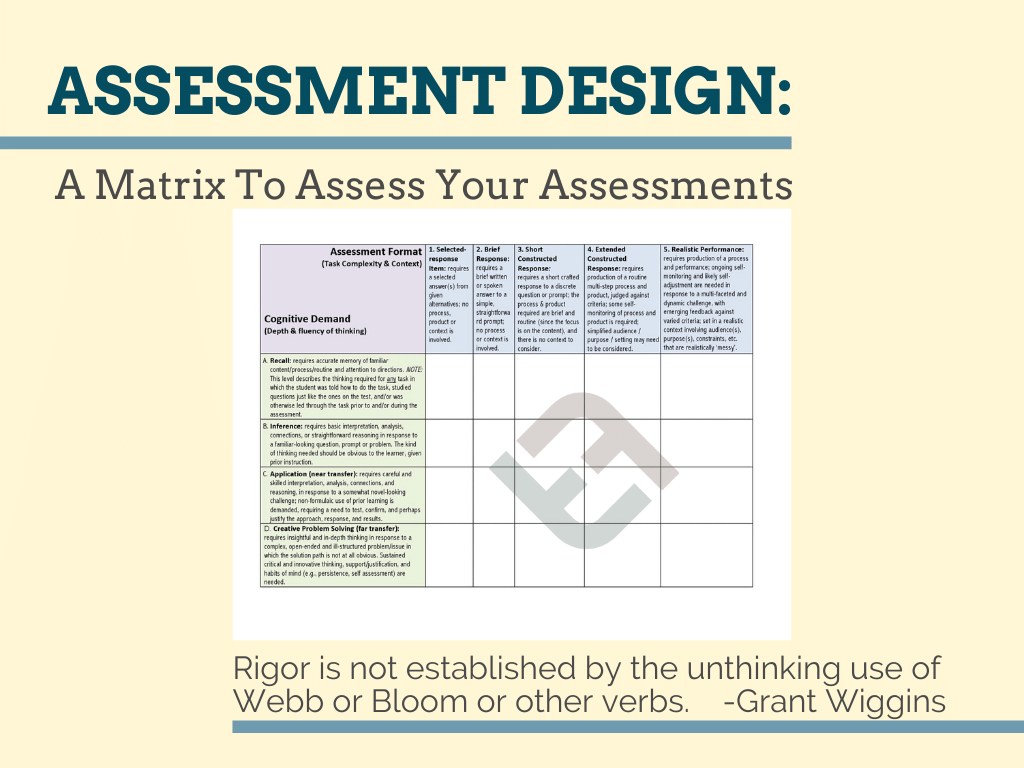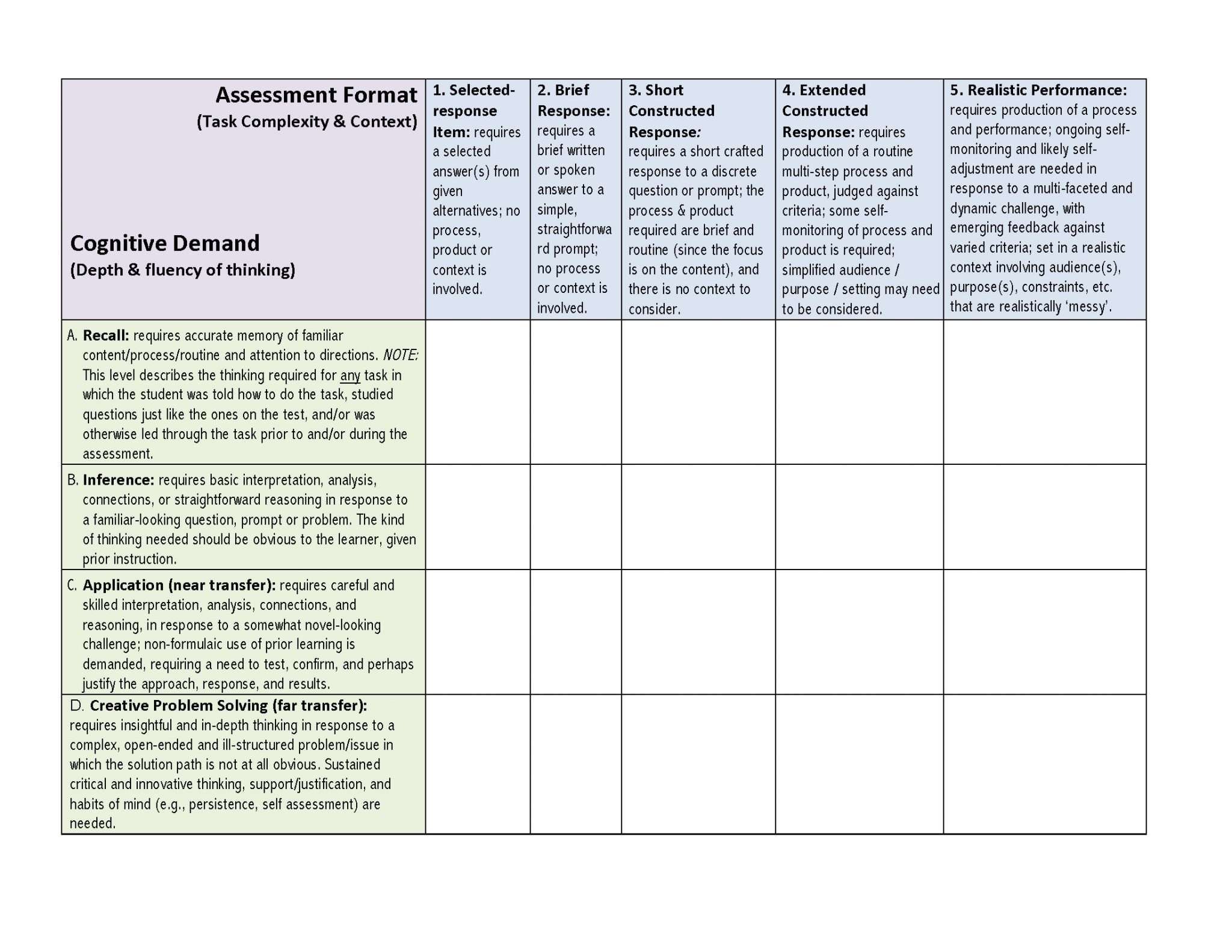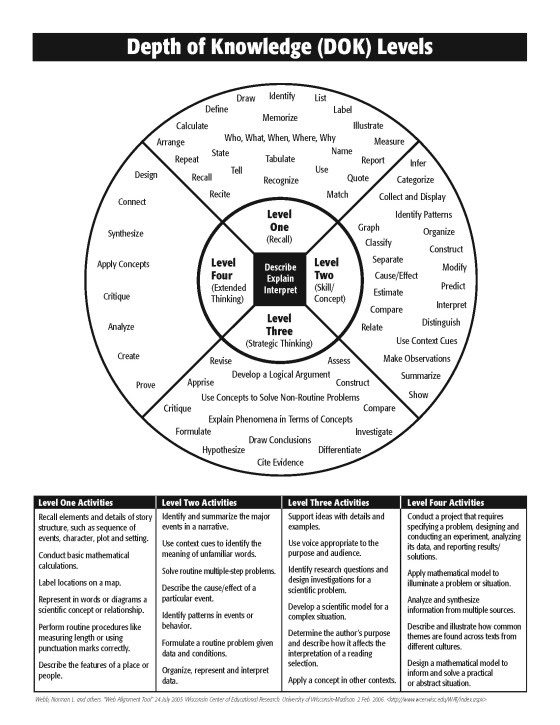
A Matrix To Assess Your Assessments
Ed note: On May 26, 2015, Grant Wiggins passed away. Grant was tremendously influential on TeachThought’s approach to education, and we were lucky enough for him to contribute his content to our site. Occasionally, we are going to go back and re-share his most memorable posts. This is one of those posts. Thankfully his company, Authentic Education, is carrying on and extending the work that Grant developed.
by Grant Wiggins, Authentic Education
On Rigor, Language, & Verbs
Rigor is not established by the unthinking use of Webb or Bloom or other verbs. Here, for example, is a widely-findable chart I found on the NJ Dept. of Education website, in which Webb’s rubrics have been turned into a leveled chart of supposedly-appropriate verbs:
A moment’s thought after looking over these verbs should make you say: Huh? How can the verb, itself, determine the rigor? Couldn’t the rigor of so-called high-level verbs be compromised by a simplistic task and scoring system? Vice versa: can’t we imagine some of the low-level verbs occurring in highly-challenging and rigorous assessments? (e.g. Who, what, when, and why in a complex journalism case would be rigorous work.)
Take ‘predict’ for example. It is viewed as relatively low-level – Level 2. But what if I ask you to predict the effects on plants of using special soil, food, and artificial lights, and I score you against industry-level standards? Vice versa: suppose I ask you to critique a drawing against the criterion ‘pretty.’ Pretty low level stuff.
In summary, just throwing some verbs around as starters for ‘rigorous’ tasks is not enough to address the first bullet concerning the challenge of the task. Rigorous tasks are a function of cognitive load and situational complexity, not just the verb used. Self-assess against our audit matrix to test your tests, therefore:
 Assessment Design: A Matrix To Assess Your Assessments; This article was excerpted from a post that first appeared on Grant’s personal blog
Assessment Design: A Matrix To Assess Your Assessments; This article was excerpted from a post that first appeared on Grant’s personal blog
